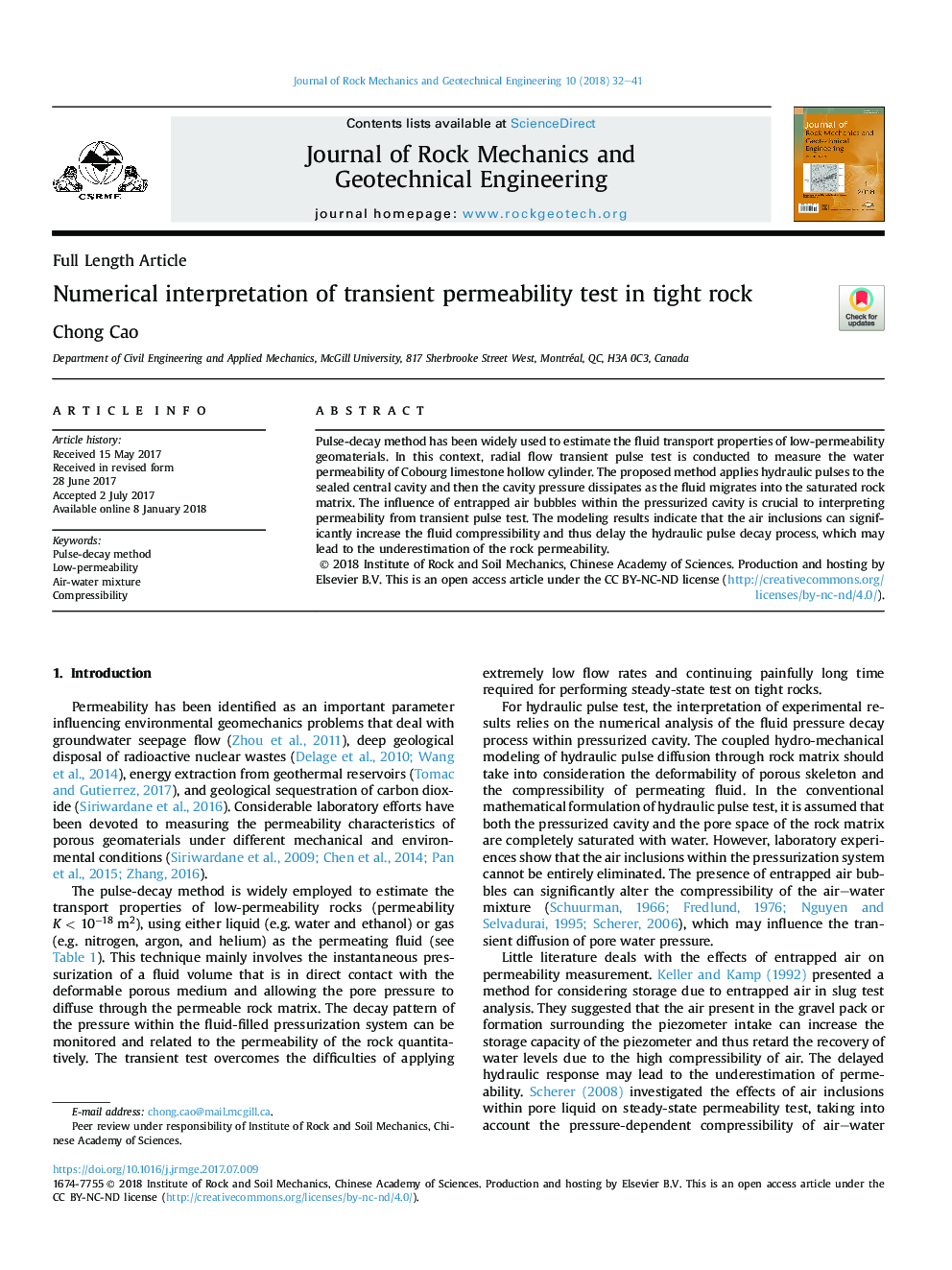| کد مقاله | کد نشریه | سال انتشار | مقاله انگلیسی | نسخه تمام متن |
|---|---|---|---|---|
| 6752360 | 1430781 | 2018 | 10 صفحه PDF | دانلود رایگان |
عنوان انگلیسی مقاله ISI
Numerical interpretation of transient permeability test in tight rock
ترجمه فارسی عنوان
تفسیر عددی آزمون نفوذپذیری گذرا در سنگ تنگ
دانلود مقاله + سفارش ترجمه
دانلود مقاله ISI انگلیسی
رایگان برای ایرانیان
کلمات کلیدی
روش انفجار پالس، کم نفوذپذیری، مخلوط آب و هوا، فشرده سازی،
ترجمه چکیده
روش تخریب پالس به طور گسترده ای برای تخمین خواص انتقال مایع مواد ژئومورفیکی نفوذپذیری کم استفاده شده است. در این زمینه، آزمون پالس گذار جریان شعاعی برای اندازه گیری نفوذ پذیری آب سیلندر توخالی سنگ آهک کوبورز انجام شده است. روش پیشنهادی پالس های هیدرولیکی را به حفره مرکزی مهر و موم اعمال می کند و سپس فشار حفره از بین می رود به عنوان سیال به ماتریس اشباع شده اش مایع می شود. تأثیر حباب های درگیر شده در داخل حفره تحت فشار برای تفسیر نفوذ پذیری از آزمون پالسی گذرا بسیار مهم است. نتایج مدل سازی نشان می دهد که ورودی هوا می تواند فشرده سازی مایع را به طور قابل توجهی افزایش دهد و به همین دلیل روند فرسایش پالس هیدرولیکی را تسریع می کند که ممکن است منجر به کاهش نفوذپذیری سنگ شود.
موضوعات مرتبط
مهندسی و علوم پایه
علوم زمین و سیارات
مهندسی ژئوتکنیک و زمین شناسی مهندسی
چکیده انگلیسی
Pulse-decay method has been widely used to estimate the fluid transport properties of low-permeability geomaterials. In this context, radial flow transient pulse test is conducted to measure the water permeability of Cobourg limestone hollow cylinder. The proposed method applies hydraulic pulses to the sealed central cavity and then the cavity pressure dissipates as the fluid migrates into the saturated rock matrix. The influence of entrapped air bubbles within the pressurized cavity is crucial to interpreting permeability from transient pulse test. The modeling results indicate that the air inclusions can significantly increase the fluid compressibility and thus delay the hydraulic pulse decay process, which may lead to the underestimation of the rock permeability.
ناشر
Database: Elsevier - ScienceDirect (ساینس دایرکت)
Journal: Journal of Rock Mechanics and Geotechnical Engineering - Volume 10, Issue 1, February 2018, Pages 32-41
Journal: Journal of Rock Mechanics and Geotechnical Engineering - Volume 10, Issue 1, February 2018, Pages 32-41
نویسندگان
Chong Cao,
